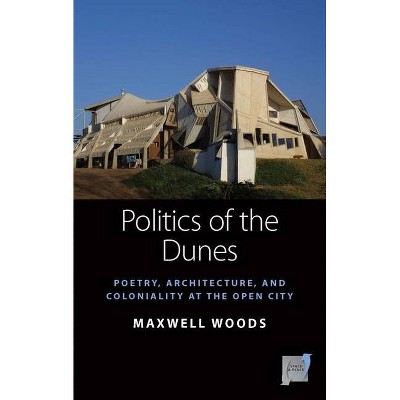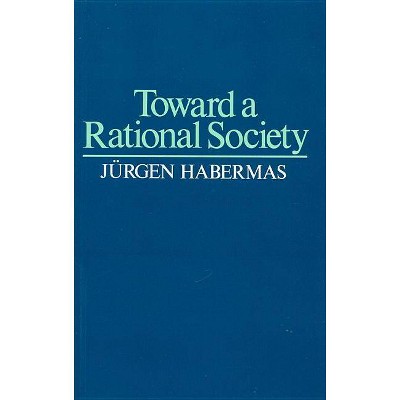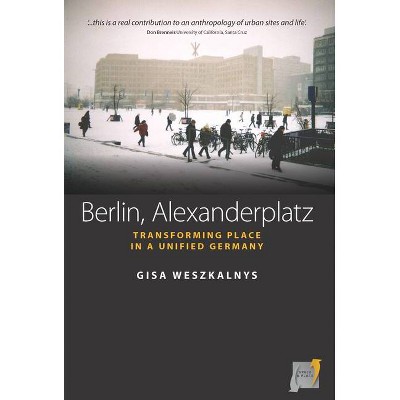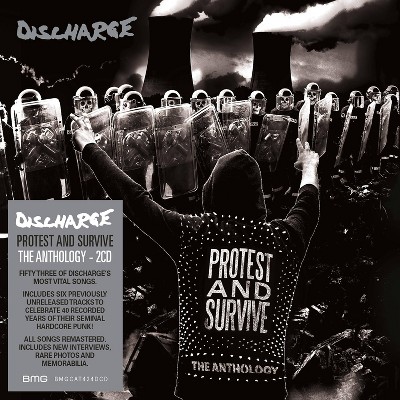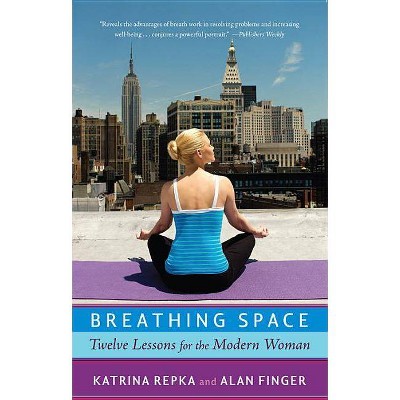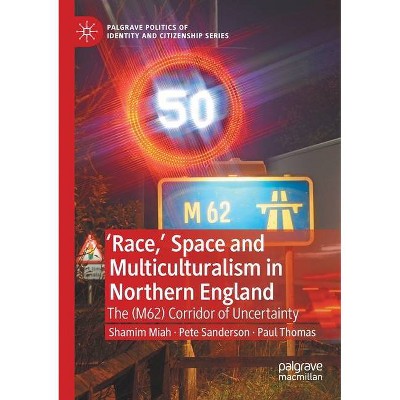Protest and the Politics of Space and Place, 1789-1848 - by Katrina Navickas (Paperback)
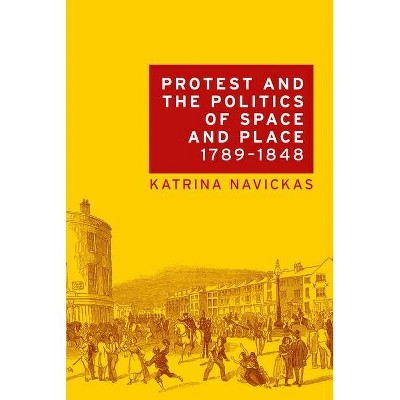
Similar Products
Products of same category from the store
AllProduct info
<p/><br></br><p><b> About the Book </b></p></br></br>An accessible and innovative analysis of how political groups used and contested spaces and places in protest. It uses a wide range of interesting sources, from Home Office correspondence to local magistrates, diaries and autobiographies, local newspapers, together with spatial analysis of sites of political protest plotted on historical maps.<p/><br></br><p><b> Book Synopsis </b></p></br></br>This book is a wide-ranging survey of the rise of mass movements for democracy and workers' rights in northern England. It is a provocative narrative of the closing down of public space and dispossession from place. The book offers historical parallels for contemporary debates about protests<br>in public space and democracy and anti-globalisation movements. In response to fears of revolution from 1789 to 1848, the British government and local authorities prohibited mass working-class political meetings and societies. Protesters faced the privatisation of public space. The 'Peterloo<br>Massacre' of 1819 marked a turning point. Radicals, trade unions and the Chartists fought back by challenging their exclusion from public spaces, creating their own sites and eventually constructing their own buildings or emigrating to America. This book also uncovers new evidence of protest in<br>rural areas of northern England, including rural Luddism. It will appeal to academic and local historians, as well as geographers and scholars of social movements in the UK, France and North America.<br><p/><br></br><p><b> From the Back Cover </b></p></br></br>This book examines the rise of mass movements for democracy and workers' rights in northern England. It surveys movements throughout the whole period from the first working-class radical societies in the 1790s to trade unions and the Chartists in the 1840s. It focuses on protesters' use of space and defence of place. The study is a provocative narrative of the closing down of public space and dispossession from place, including the attempts by national and local governments to clamp down on working-class political action by restricting their meeting sites. The 'Peterloo Massacre' of 1819 is also explored - a turning point in the development of mass protest and its suppression by the government, as radicals, organised labour and, later, Chartists fought back by challenging their exclusion from public spaces, creating their own sites and eventually constructing their own buildings. The book also uncovers new evidence of 'resistance from below' in rural areas of northern England, including rural Luddism. Protest and the politics of space and place, 1789-1848 will primarily appeal to students and academic historians, but it also has cross-disciplinary interest for geographers and scholars of social movements in the UK, France and North America. It also offers specific interest for local history societies and political groups in northern England<p/><br></br><p><b> Review Quotes </b></p></br></br><br><br>Navickas not only examines the ways in which local elites organised carefully choreographed and highly ritualised public displays of loyalty, but also traces their systematic attempts to exclude radicals and their ideas from the civic body politic. Her 'thick' descriptions of the loyalist violence<br>and intimidationELare not only chilling in their detail, but are redolent of E. P. Thompson's classic 'The Making of the English Working Class' in the way in which local detail is tellingly deployed both to illustrate and add nuance to a more general argument. - Reviews in History, Dr Mike Sanders, <br>University of Manchester, September 2016 <br><p></p><br>The book remains interesting and informative throughout, and on the whole it is both well-organized and well-written. The research basis is better than solid. This book has merits that outweigh its weaknesses, and for anyone wishing to know more about British popular politics between 1789 and<br>1848 it will be essential reading. - Michael Turner, Appalachian State University, Labour/Le Travail 78 Volume 78, Fall 2016 <br><p></p><br>Readable and fascinating, Katrina Navickas book might be particularly of interest to modern day activists and historians in the North (particularly Manchester) but I expect it will also become a much studied book for social historians trying to understand the historic struggles that have shaped, <br>quite literally, the world we live and struggle in today. - Resolute Reader <br><p></p><br>Navickas is to be congratulated for producing a work of prodigious scholarship, the conclusions of which repay close attention by any scholar of modern popular protest and politics. - Matthew Roberts, Sheffield Hallam University, Parliamentary History <br><p></p><br>Anyone interested in the long eighteenth century will welcome this fine monograph on a subject at the heart of debates on the 'popular' history of the period. The topics of 'space and place' have been around for some time, from the work of Mark Harrison (1988), James Vernon (1993), Paul Halliday<br>(1998), Steve Poole (1999) and James Epstein (2003), but they have never been treated with the depth of research and the generosity of scope that are provided here. Katrina Navickas drills more deeply into the world of protest than any of her predecessors and her perceptive research is presented in<br>a lively and readable narrative. <br>Frank O'Gorman, University of Manchester, English Historical Review <br><p></p><br>This is an impressive volume that brings together recent research and insights about the uses of space to provide a convincing analysis of the importance of the concept to patterns of radical continuity between the late eighteenth and mid-nineteenth-century. - Anthony Taylor, Sheffield Hallam<br>University, Journal of Social History <br><p></p><br>Protest and the Politics of Space and Place offers a fresh look at the struggles that swept across England from the time of the French Revolution to the heydays of Chartism. The book combines recent theoretical debates on the construction and restriction of public space with a rich and very<br>detailed study of past movements fighting for democratic participation and civil rights in northern England. The sheer amount and breadth of archival evidence presented here is astonishing. From small town records to collections held at the British Library, Katrina Navickas draws on a variety of<br>materials that make the book empirically rich without getting lost in detail. - Philipp Reick, Hebrew University, Jerusalem, H-Soz-Kult <br><p></p><br>What Katrina Navickas has achieved in The Protest and Politics of Space and Place, 1789-1848 is to argue cogently and clearly for historians to consider the importance of geographic conceptions of space and place. [...] Navickas' work demonstrates the continued fruitfulness of historical research<br>that draws inspiration from sister disciplines. It is a worthwhile read for scholars and students, alongside those fascinated in understanding the radical history of now stable and peaceful communities. - Dr Marc Collinson, University of Bangor, Transactions of the Historic Society of Lancashire &<br>Cheshire <br><p></p><br><br><p/><br></br><p><b> About the Author </b></p></br></br><br>Katrina Navickas is Senior Lecturer in History at the University of Hertfordshire<br>
Price History
Price Archive shows prices from various stores, lets you see history and find the cheapest. There is no actual sale on the website. For all support, inquiry and suggestion messagescommunication@pricearchive.us
